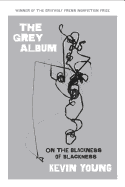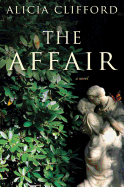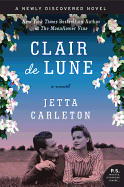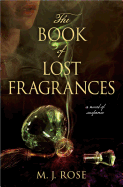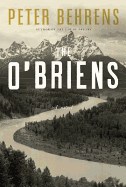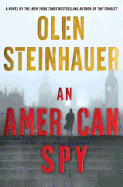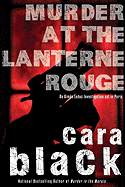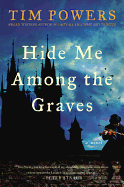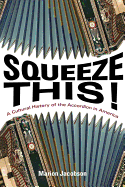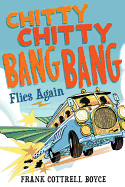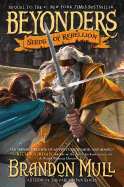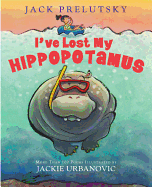After Tuesday's article about the dearth of good basketball books, several people sent in their favorite titles. Aaron Talwar likes Inside Moves by Todd Walton, the story of a friendship between a Vietnam vet and a basketball player with a bum leg. It's out-of-print, so check your library. Two people--Doris Baker and John Van Haalen--touted My Losing Season by Pat Conroy, the memoir of his senior year as captain of the Citadel Bulldogs, and how, despite a losing season, a team came together in love and friendship. My additional choice (how could I have forgotten it?) is the novel Blind Your Ponies by Stanley Gordon West. Set in a small, dying town on Montana, it's the story of a losing (0-93) team, a reluctant coach and a very tall, bewildered exchange student; it's also a story of hope and bravery.
The City Game, the classic by Pete Axthelm, was mentioned by Kathy Johnson. Axthelm parallels the 1969-70 Madison Square Garden world of the New York Knicks with the asphalt playgrounds of Harlem and Bedford-Stuyvesant. Eliza Rosenberry from Blue Rider Press e-mailed about their recent title, The Last Great Game: Duke vs. Kentucky and the 2.1 Seconds That Changed Basketball by Gene Wojciechowski. That 1992 game is considered by many to be the best NCAA game in history. It's good sportswriting and starts: "The truth? The truth is Mike Krzyzewski liked the shape of her legs." And if you can't get enough of Duke, try The Krzyzewskiville Tales by Aaron Dinin--demented sports fans à la The Canterbury Tales.
Monday night my husband was filling out his brackets in bed out loud while I was trying to sleep. In retaliation, I told him I'd already completed mine. I used Blindfold Brackets. Fun and easy, but if your favorite animal is a honeybee, you are doomed. So let the games and the reading commence. --Marilyn Dahl, book review editor, Shelf Awareness
The Affair
by Alicia Clifford
After Celia Bayley dies, her children and grandchildren have to figure out how to go on living without her comforting presence and peacemaking. Her three adult children--Robert, Sarah and Margaret--all suddenly find themselves facing crises within their marriages. Robert isn't speaking to his daughter, which makes his wife unhappy. Sarah's husband reveals a shocking secret, and Margaret's years of unhappiness with her husband have suddenly come to a head.
Then comes an amazing surprise: Celia's writing, which they'd thought of as a hobby, had made her famous. To the disbelief of her oblivious, unbookish children, reporters appear at the funeral and a would-be biographer shows up at the door asking questions about her. As the biographer starts digging, they discover that the cliché of their parents' fantastically happy marriage might not have been quite true. Even more astonishingly, it turns out that there were secrets in Celia's past that had been hidden from her children for more than 50 years.
The Affair is told in alternating chapters, as Alicia Clifford switches between scenes of the extended Bayley family in present-day England and Celia's childhood in the 1930s and her years as a new wife in the 1940s and 1950s. As the past unfolds, the reader is always just a step ahead of the Bayley family in finding out the secrets of Celia's life and how seemingly insignificant incidents from a lifetime before are affecting them all today. The Affair is a timeless novel about family, love and the question of how well you can ever truly know someone. --Jessica Howard, blogger at Quirky Bookworm
Discover: A novel about true romance and the complications of love down through the generations.
Clair de Lune
by Jetta Carleton
Jetta Carleton's posthumous Clair de Lune comes nearly 50 years after the only novel she published during her lifetime, The Moonflower Vine. To read Clair de Lune is to be transported back though time to 1941--and the book is so superbly written it's a real treat to be able to read finally.
Miss Allen Liles is a single college teacher trying to stave off the boredom of her midwestern life. Enter Toby and George, two passionate and intellectual undergrads who are also Allen's students. They strike up a friendship that goes too far and Allen finds herself in a quagmire in which her job, her future and her reputation are all in jeopardy.
Carleton's book is a coming-of-age novel, not for the students with whom Allen dangerously tangos, but for the teacher herself. What are the ramifications of Allen's making a spectacle of herself as her relationship deepens with the two young men? Through Allen's story, Carleton seems to be weighing the bleak alternatives to such free-spiritedness--limited career options or a boring marriage to a humdrum suitor deemed appropriate. The young teacher is held to a different standard than her male counterparts, and when she is taken to task for her behavior, Allen must find a way to survive without sacrificing her very self in the process. The solution Carleton creates for Allen's dilemma shows a true understanding of the margin for human error. --Natalie Papailiou, author of blog MILF: Mother I'd Like to Friend
Discover: A treasure of a novel about a young woman casting off traditional mores in 1941.
The Book of Lost Fragrances
by M.J. Rose
M.J. Rose (The Hypnotist) once again takes readers on a time-defying journey filled with passion and danger in The Book of Lost Fragrances, with a story that links reincarnation to the sense most likely to trigger memories: scent.
Siblings Jac and Robbie L'Etoile descend from a long line of perfumers, but Jac turned her back on her inherited talent with fragrances to become a mythologist. Now, with one parent dead and the other institutionalized, Jac learns that the family perfumery is nearing bankruptcy. Robbie believes he can reverse their fortunes if he can replicate a scent that has been a family legend since 1799, a fragrance powerful enough to cause past-life memories with one whiff. The last vestiges of this mystical pomade cling to a few shards of pottery in the L'Etoiles' possession, but dangerous forces will do anything to obtain the fragments. A mystery stretching back 2,000 years to the fabled perfume factory of Cleopatra will pit the siblings against triad assassins, embroil them in the Chinese-Tibetan conflict and reunite Jac with her long-lost first love.
A kaleidoscope of memorable characters and exotic locales come together to fulfill destinies and unlock the secrets of the past. Elements of both thriller and paranormal romance dominate, and the insights Rose offers on the methods and science of perfumery throughout history add a fascinating top note. A full-color glossary of terms from Rose's extensive research provides an esthetically pleasing method of expanding the reader's knowledge without adding unnecessary weight to the narrative. --Jaclyn Fulwood, blogger, Infinite Reads
Discover: The heirs to a perfumery take a journey through past lives with the aid of a mystical fragrance.
The O'Briens
by Peter Behrens
"There was a restless instinct in the family, an appetite for geography and change," Peter Behrens notes near the beginning of The O'Briens, his epic novel of an immigrant clan that spans more than three-quarters of a century, criss-crosses North America and encompasses four generations--all the time fulfilling that early foreshadowing in grand, heartbreaking, poetic prose.
As a boy, Joe O'Brien takes responsibility for his ailing mother and younger siblings, shielding them from his abusive stepfather and the poverty of Quebec's timber country, building a logging business by 18. Pragmatic and determined, he leads the O'Brien children out of the wilderness, finding opportunities for two sisters and a brother to pursue vocations while the two older brothers set off for the promise of California.
Released from the backwoods and haunting memories of his family, Joe's energy is unflagging. While his mood is often dark, his generous spirit perseveres, and he weds the independent Iseult in Venice, Calif. They travel to Mexico, British Columbia, and back to California, Joe's railroad empire (and their family) growing as the First World War looms. Behrens adroitly skips years, scooping family and world history into neat summaries without sparing the drama of war, business risks and tragedy.
By 1917, the prosperous family is settled comfortably in Montreal, but the war cannot be avoided forever, and the next generation of engaging O'Briens faces conflicts of their own. Joe's flaws are apparent but we know his heart is true, and we come to love this family as much as he does. --Cheryl Krocker McKeon, bookseller
Discover: An Irish immigrant family's path from poverty to riches, across 20th-century North America.
The Vanishers
by Heidi Julavits
Women with psychic powers take center stage in The Vanishers, a paranormal thriller by Heidi Julavits (The Uses of Enchantment) that turns on rivalry between women and the often fraught relationship between mothers and daughters.
Julia Severn's powerful psychic gifts bring her to the Workshop, which is similar in purpose to Hogwarts but has the feel of a small liberal arts college. There Julia meets the beautiful Madame Ackermann, a teacher whose power and charisma make her the obsession of all the students. But when Julia ends up on the wrong side of Madame Ackermann, she awakens one morning to discover that her health is failing--that she is under "psychic attack."
Julia plunges into the convoluted world of psychic intrigue in an attempt to uncover the reason for Madame Ackermann's vendetta--and find a way to stop it. Julia discovers that the solution to the mystery is dangerously close to home, as it concerns her own mother, who committed suicide when Julia was a baby. Julia's journey takes her across Europe and deep into the past, where she witnesses the betrayal and violence in which her mother was embroiled before Julia was ever born.
Bristling with wicked humor and sharp-edged irony, The Vanishers explores the ways in which the dead can haunt the living and the often painful persistence of memory. This novel also addresses head-on the nearly universal fear of discovering the worst about one's parents. Julia faces the worst so that the reader can, vicariously, experience the realization of these fears and their implications for one's psyche. --Ilana Teitelbaum
Discover: A wickedly funny, dark suspense novel by the author of The Uses of Enchantment.
Mystery & Thriller
An American Spy
by Olen Steinhauer
An American Spy is Olen Steinhauer's third thriller starring Milo Weaver, a retired CIA operative who was part of the top-secret "Department of Tourism," a team of agents operating with little or no restraints. The plot extends directly from that of its predecessors, The Tourist and The Nearest Exit, but don't worry if you haven't read those books; Steinhauer works the prior events and preexisting relationships smoothly into the new storyline.
Steinhauer waits nearly 100 pages before he brings Milo into the story. After a brief prologue set in Germany, the opening section deals primarily with Xin Zhu, a high-ranking Chinese intelligence officer whose linked obsessions--with the Department of Tourism and with the threat of a mole in China's Ministry of Public Security leaking secrets to the Americans--have led to cataclysmic operations that now jeopardize his position. While Zhu schemes to gather evidence and convince his colleagues of the mole's existence, the former head of Tourism is trying to recruit Milo into joining his plan to make one last run at taking down Zhu.
Steinhauer's use of multiple perspectives allows him to lead readers down a suspenseful path, then double back and fill in the timeline with information from a new angle that forces total reappraisal. With all the switchbacks, though, one thing remains constant: Milo is fiercely dedicated to protecting his wife and daughter. His enemies can use that against him, but it also fuels his anger against them, creating an uneasy tension that lasts until all the major players have maneuvered themselves into place. Even then, Steinhauer continues to redraw the boundary lines, leaving himself (and Milo) an opening for further exploits. --Ron Hogan, founder of Beatrice.com
Discover: Steinhauer's spy stories are often compared to the best of John le Carré and Len Deighton, and An American Spy ably lives up to that reputation.
Murder at the Lanterne Rouge
by Cara Black
In Cara Black's Murder at the Lanterne Rouge, the 12th appearance of Parisian investigator Aimée Leduc, the case involves the new girlfriend of her partner, René. Although they have been together only two months, René believes that Meizi Wu is his soulmate. Aimée is not so sure and thinks that things are moving way too fast.
Her worst fears are confirmed when they are at a restaurant for Meizi's birthday, along with Meizi's parents. Meizi gets a telephone call, leaves the table and never returns. Minutes later, a man's body is found in the alley with Meizi's picture in his wallet. Meizi has vanished; her "parents" are not really her parents.
From here, Black wraps the reader in a labyrinthine plot resembling a French version of Chinatown. Aimée is her usual sassy self, driving her Vespa through the rainy streets, dressed in designer fashions and three-inch Prada boots, making time once in a while for her lover, Melac, who works for the Brigade Criminelle at a job he can't talk about, and her godfather, Morbier, Monsieur le Commissaire. This time, she is in grave danger from more than one quarter, and her connections may be working against her.
She starts her investigation into what happened to Meizi by making her way through Chinese sweatshops where women work in deplorable conditions. Her discoveries there lead to more mysteries, which eventually include the Chinese mafia, the Knights Templar, Medieval Guilds, fiber optics and betrayal where it is least expected. --Valerie Ryan, Cannon Beach Book Company, Ore.
Discover: Fearless Aimée Leduc finds herself sorting out a woman's disappearance in a Parisian Chinatown.
Hide Me Among the Graves
by Tim Powers
In Hide Me Among the Graves, Tim Powers returns to the fantasy-infused 19th-century England of his 1989 novel The Stress of Her Regard, where he transformed Byron and Shelley into vampire hunters. This time around, he turns to the Victorian era and the famous Rossetti siblings, Christina (the title comes from one of her poems) and Dante Gabriel. There are some key callbacks to the first book; chief among them is protagonist John Crawford, who was born in the final pages of The Stress of Her Regard and is now a London veterinarian, mourning the recent loss of his wife and children.
As the book opens, Christina Rossetti and her sister, Maria, bury a family heirloom, a strange "little black stone figure" that seems to have dark, magical power. Then, Crawford is walking along the Thames at night when a woman approaches, and suddenly something rushes "at the two of them out of the charcoal sky, something alive and churning and savage." The woman is Adelaide McKee; years earlier, as a prostitute, she had a liaison with Crawford that led to the birth of their daughter, Johanna. No sooner has Crawford discovered the existence of this child than Adelaide informs him that Johanna has been pledged to the ghost of John Polidori--the former physician to Lord Byron, and the uncle of the Rossettis--and he must help save her.
Powers unwinds the elaborate narrative that follows beautifully, as the Rossettis join with Crawford and McKee to defeat Polidori, who is plotting with ancient vampiric forces, the Nephilim, to destroy the families involved. Even though Powers's prose is contemporary rather than Victorian pastiche, the novel is steeped in period detail and foggy Victorian London atmosphere. One can't help but savor the lush and dark fictional world Powers creates. --Tom Lavoie, former publisher
Discover: Those who enjoy big Victorian gothic thrillers with a heavy dose of ghosts and vampires will find this a lot of fun.
Essays & Criticism
Grey Album: On the Blackness of Blackness
by Kevin Young
Scholar and poet Kevin Young's first major work of nonfiction, The Grey Album, is a personal, scholarly, far-reaching and innovative study of the role of "storying" in American culture, particularly African-American culture.
The art of "storying," as Young describes the tradition of "black imagination conduct[ing] its escape by way of underground railroads of meaning," is central to the literature and music of an American black population struggling out of slavery, segregation and racism. It involves creating a "counterfeit" identity--switching names and nicknames ("Hell, look how many names Diddy has had in the relatively short time he has been on the scene") and crafting languages (slave work chants, gospel shouts, oral poetry, blues mumbling, jazz scat, soul "fa-fa-fa-fa-fa," hip-hop profanity, DJ scratch).
Langston Hughes, Frederick Douglass, Gwendolyn Brooks and Ralph Ellison share the spotlight with relatively obscure people like Paul Laurence Dunbar and Bob Kaufman. Young pulls readers deep into the music of everyone from Bird and Miles to Otis and Aretha, up to Wu-Tang and Danger Mouse (whose mashup of Jay-Z's Black Album with the Beatles White Album inspired Young's title). Even Muhammad Ali's bobbing and weaving "rope-a-dope" strategy and his "sting like a bee" poetry are part of the storying tradition.
The pleasures in The Grey Album, however, are not just those of learning erudite details of black American history, but also those of hearing the impassioned impressions of a poet diving deep into his own personal history. Young entertains as much as he teaches and broadens our understanding of the unifying threads of the country's cultural traditions. --Bruce Jacobs, founding partner, Watermark Books & Cafe, Wichita, Kan.
Discover: With a poet's flair, a musician's tone and a scholar's care, Kevin Young explores the art of "storying" in African-American culture.
Performing Arts
Squeeze This! A Cultural History of the Accordion in America
by Marion Jacobson
Ethnomusicologist Marion Jacobson's Squeeze This! is a serious work of musical and cultural history written in an engaging and accessible voice, in the tradition of books like Paul Berliner's The Soul of Mbira and Karen Linn's That Half-Barbaric Twang. Jacobson goes beyond a consideration of the accordion as physical artifact to show how the instrument operates in social, cultural and symbolic terms.
It begins with Jacobson's own inadvertent introduction to America's "accordion culture" and ends with a look at the modern accordion revival, which repositions the often-derided instrument "as avant-garde, edgy, even sexy." In between, she discusses how the role of the accordion in American society evolved in response to changes in immigration law, the death of vaudeville, the rise of radio, the invention of the electronic microphone, cultural assimilation and preservation and the youth culture of the 1960s. She also traces the rise and fall of the accordion in popular culture through the careers of the musicians who play it, from Guido Deiro to Weird Al Yankovic.
Possibly the most interesting portion of the book is its exploration of the accordion as "a low-tech, antipostmodern antidote to synthesizer saturation." Subversion, the search for authenticity and the contrast between images of female sexuality and male nerdiness are not topics commonly associated with the accordion and accordion players, but Jacobson makes it all work. Squeeze This! is not just a book about accordions. It will appeal to readers interested in both the development of American music and America's cultural history as a whole. --Pamela Toler, blogging at History in the Margins
Discover: The accordion as a major force in 20th-century American music.
Children's & Young Adult
Chitty Chitty Bang Bang Flies Again
by Frank Cottrell Boyce, illus. by Joe Berger
Frank Cottrell Boyce (Millions) creates a fitting tribute to the Ian Fleming classic with this companion volume starring the loving Tooting tribe and a family camper with a will of its own.
When Mr. Tooting loses his factory job, he sees it as an opportunity to do home improvements. But it doesn't completely work out. He paints goth teen Lucy's room a bright blue with daisies, and programs his youngest son Harry's toys to play with him, resulting in his pet snake's attempts to strangle the child. Luckily, Mrs. Tooting finds an old camper in need of rehabilitation that will provide the wheels for their summer holiday. Mr. Tooting goes in search of an engine to rehabilitate and finds a 12-piston beauty with its own name, Zborowski. And they soon discover the engine has wings.
Boyce takes the framework of Fleming's tale and runs with it. Berger's illustrations of the camper's first flight and landing atop the Eiffel Tower tap into the fun and good humor. All the children get into the swing of it: Little Harry is at the wheel the first time the camper takes off; Jem helps Dad as chief assistant car mechanic; and Lucy comes up with a way to make some cash serving pancakes out of the camper in Cairo (aka "Café Café Bang Bang"). Of course there's a requisite evasion of the villains, and adult Fleming fans will detect some clever allusions to Bond. Boyce makes the family dynamics the greatest source of humor in a book the whole family can enjoy. --Jennifer M. Brown, children's editor, Shelf Awareness
Discover: A clever homage from Frank Cottrell Boyce to the children's book classic by the creator of James Bond.
Seeds of Rebellion: Beyonders, Book Two
by Brandon Mull
The plot of Brandon Mull's (the Fablehaven series) page-turning second book in the Beyonders trilogy picks up just where it left off: Jason Walker has found his way home from the cornfield where we left him at the end of the first book. He tries halfheartedly to fit into his old routine, but his thoughts continually turn to the disembodied hand of Ferrin the displacer, which he brought back with him; to Rachel Woodruff, his fellow "Beyonder"; and to a sense of urgency to share what he has learned about the Word and the evil wizard Maldor.
Jason returns to Lyria via the same pathway--through the digestive tract of the hippo at the Vista Point Zoo. And when he emerges in Lyria, Tark turns out to be, once again, the source of the music Jason hears in the hippo's pen. Tark split off from Rachel and Drake, a seed man from book one, because they were being stalked by one of Maldor's "lurkers." Meanwhile, a charm lady, impressed with Rachel's abilities, offers to teach her Edomic, Maldor's language.
With Maldor still gaining power, Jason and Rachel join forces with more fellow resistors. Aram, a half-human and half-giant, and Ferrin the displacer are among them. Mull assumes readers have begun with the first book, A World Without Heroes; he begins with a spoiler to that book. But his themes deepen here, as he continues to mine questions of what makes a hero and what constitutes loyalty. Readers will be eager to read the third and final installment. --Jennifer M. Brown, children's editor, Shelf Awareness
Discover: Brandon Mull's exciting and thought-provoking follow-up to A World Without Heroes: Beyonders, Book 1.
I've Lost My Hippopotamus
by Jack Prelutsky, illus. by Jackie Urbanovic
Have you ever seen an Appleopard or a Crabacus? How about a Boomerangutan? These are just a few of the creatures featured in Jack Prelutsky's latest side-splitting anthology of more than 100 poems.
Jackie Urbanovic's pen-and-ink illustrations match the imagination of the poet. The Applelopards that dangle from a tree simultaneously appear to be "delicious" and also "beastly to the core." The Crabacus, on the other hand, "keep[s] careful count/ Of every single grain of sand,/ Recording the amount" on an abacus built into its chest, according to its portrait. The crabacus is not to be confused with the snake that can do arithmetic: "She can't subtract, which makes her sad,/ And two things make her sadder.../ She can't divide or multiply--/ My snake is just an adder."
Prelutsky presents an array of forms and rhyme schemes, including haiku for a half dozen common creatures, such as an Oyster ("I'm clearly no gem,/ But in my interior/ I'm growing a pearl"), a tongue twister for "Two sea horses... on an undersea seesaw," and the occasional limerick. A few especially memorable poems involve a child that Urbanovic pictures as sucking his thumb and carrying a Teddy bear, who runs away from home ("My little plan soon met defeat--/ Besides not having much to eat,/ I'm not allowed to cross the street"). Dinosaur fans will glom onto "Tyrannosaurus and his bride [who]/ Terrified the countryside./ Then they fell and broke their necks--/ Poor Tyrannosaurus wrecks!" Read these aloud for maximum effect. --Jennifer M. Brown, children's editor, Shelf Awareness
Discover: The latest anthology from Jack Prelutsky with an array of hybrid creatures, rhyme schemes and plenty of laugh-inducing poems.


